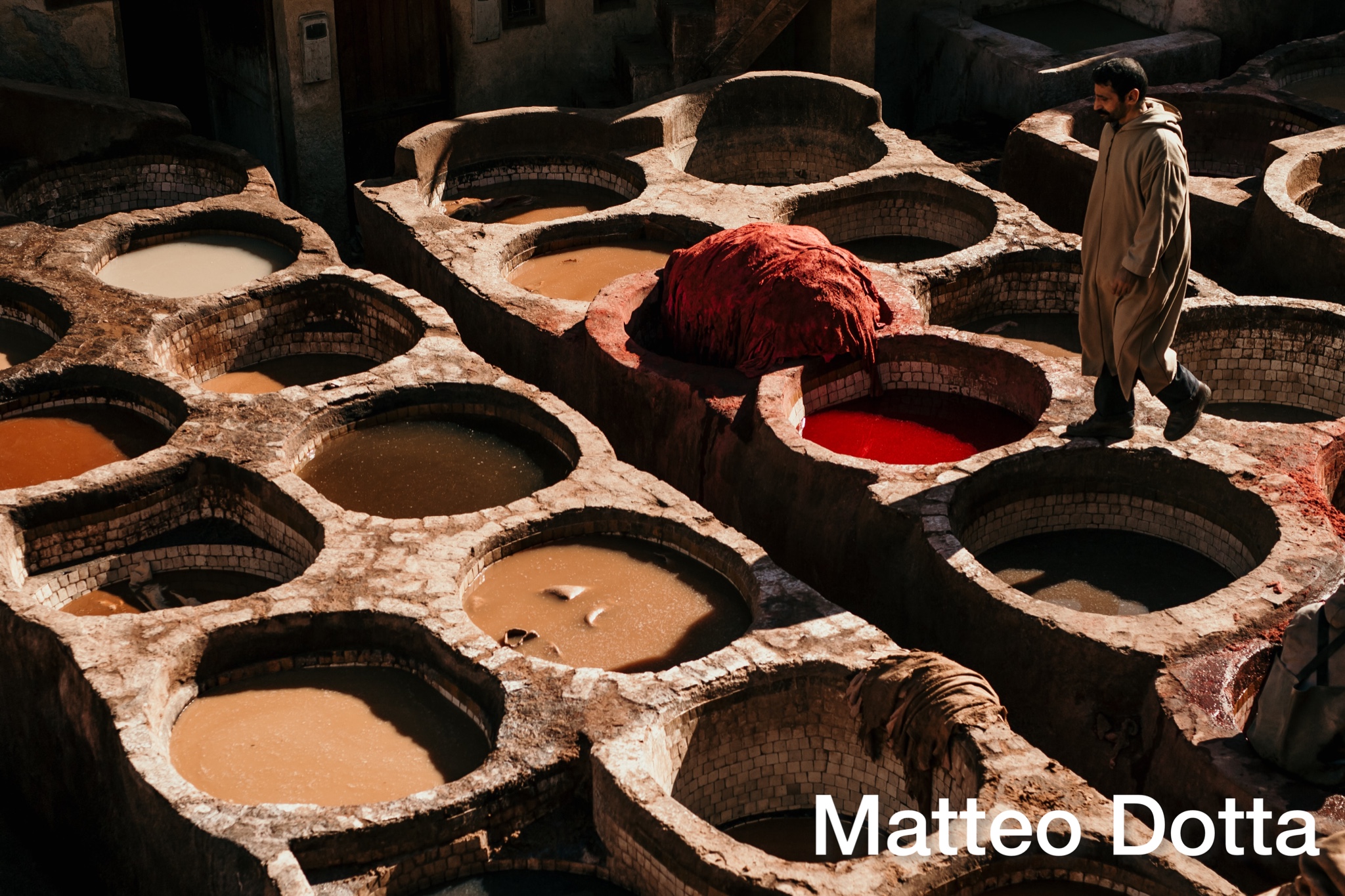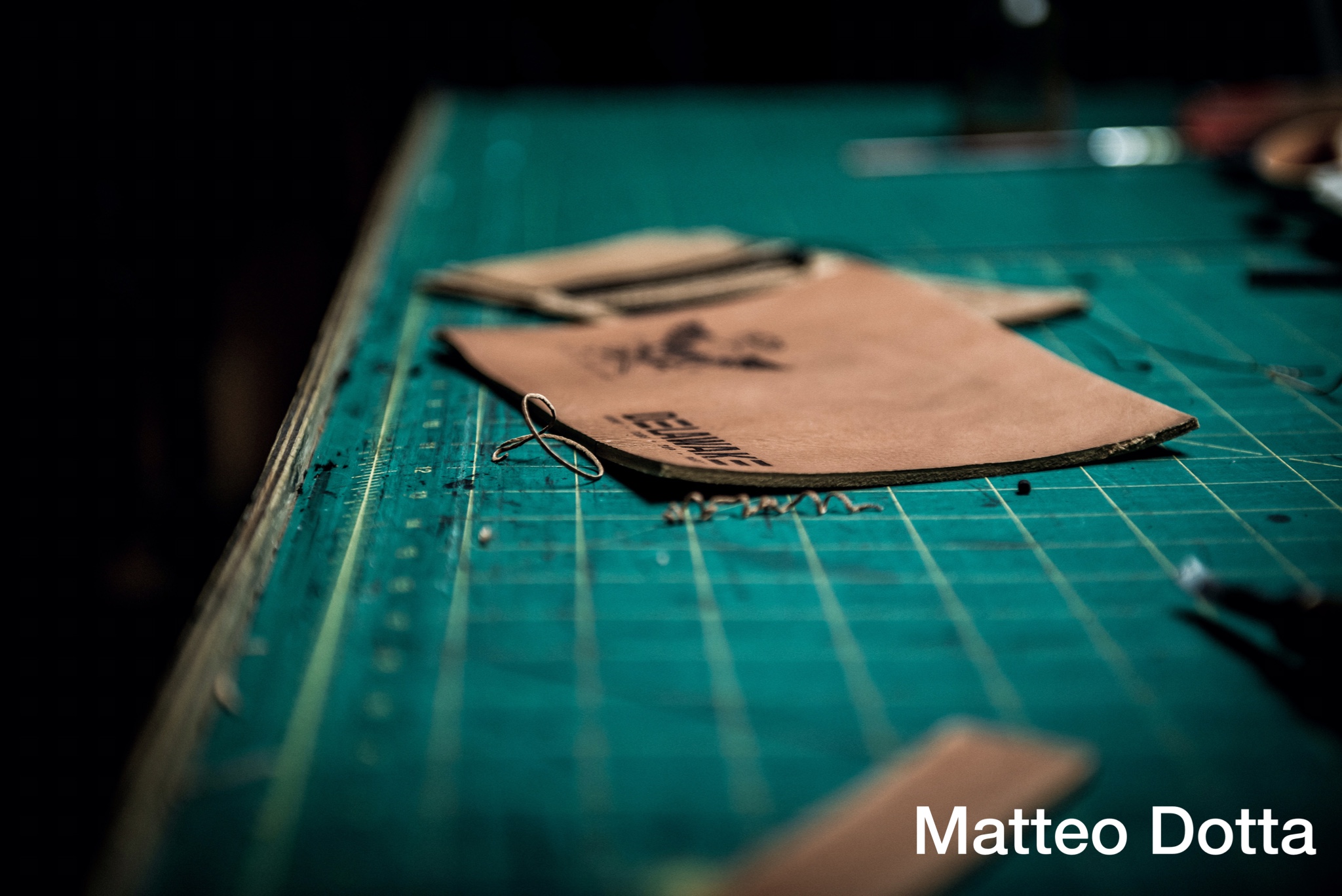Vegetable tanning has very ancient origins, some examples of natural tanning with tannins date back to 2000 years ago even if the major development took place during the Middle Ages and until the end of the 19th century almost all leathers were vegetable tanned.
Tanning with vegetable tanning agents dominated the leather production scene until chrome tanning began to be used on an industrial scale.
The Process
It is based on the use of water and a class of tanning reagents contained in the bark of various plants (such as oaks, chestnuts, acacias,…) commonly called tannins. There are a large number of types of wood, bark, leaves, fruits, roots, or pathological growths that contain usable tannins. These agents are marketed worldwide after being extracted, concentrated, and sold largely in powder form.
In vegetable tanning, it is possible to find either hides in their “natural” color, usually beige or brownish, or also almost-white through yellow, olive, and red, but in all cases, the leather retains its character and is immediately distinguishable from normal leather. Also, the tempering changes: compared to chrome leather, the tempering of vegetable-tanned leather is generally stiffer and more compact, even if much depends on the recipes and the fat liquors used. Finally, vegetable-tanned leather is particularly suitable for people with allergies: the processing, in fact, is carried out without the use of toxic substances, chemicals, or heavy metals.
In the past, was very slow and required that leathers were stretched with a frame and immersed for 1-3 months in a solution of water and tree barks, frequently checking the state of tanning. Moreover, leather tanned in this way was not very flexible and was generally used for footwear, bags, and belts. Just think that the traditional processes of vegetable tanning in the pit required up to a year and a half in some cases.
Until the sixties, vegetable tanning was done in tanks, in which the hides were immersed in solutions of tannins at progressively increasing concentrations and lasted about 30 days. Today we mainly use the so-called rapid tanning in barrels which, thanks to the rotation and beating movement, allows us to obtain a more flexible leather and to reduce the tanning time which is between 36 and 48 hours.
Over the centuries, expert master tanners have jealousy handed down, from generation to generation, the secrets of this precious artisan process, which today has become a perfect mix of ancient recipes and advanced technology.
Vegetable tanning with tannins is by far the most eco-sustainable tanning method:
1. tannins are safe for man and the environment;
2. the mud resulting from the tanning process can be easily recovered (and transformed into material for the creation of bricks for the building industry!)
3. then items can last for generations;
4. once their useful life is over, they can be easily disposed of and turned into fertilizer for agriculture.
And what are the disadvantages?
1. the average processing time for vegetable tanning is very similar to the one for chrome-tanned leather, but can take up to 60 days for sole leather production;
2. leather can be easily stained in the presence of iron during processing steps;
3. items are more expensive. In fact, require considerable craftsmanship;
4. the colors are limited;
5. direct heat can cause shrinkage and possible cracking in vegetable-tanned items.
Nowadays, processes are also used in combination with synthetic tanning agents to produce so-called technical leather. These include leather qualities for shoes, soles, belts, saddles, bags, linings, wallets, and briefcases.
Vegetable-tanned leather absorbs traces of wear and tear. It ages, but it doesn’t spoil.
Over time, the tannin colors give warm tones to the leather, which tend to resurface with the use. Choosing a product made with this leather means owning an article that is the expression of a philosophy and a lifestyle, unique and unrepeatable.
Sources
CONCERIA NUTI IVO SPA (2010): Fascination Leather
https://www.pellealvegetale.it/pellealvegetale/
https://www.tannins.org/it/cose-la-pelle-conciata-al-vegetale/
https://buyleatheronline.com/it/blog/cosa-si-intende-per-pelle-conciata-al-vegetale-n27



